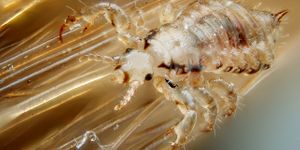Revealing the Mutations that Make Melanoma Immortal
Telomeres cap the ends of chromosomes, preventing breakage. These repetitive sequences of DNA also get shorter each time a cell divides, eventually reaching a point where they can't get any shorter, and the cell ceases to divide. Because they get shorter over time, they are associated with aging, and when telomeres are disrupted or not properly maintained, serious diseases can arise. While short telomeres are associated with death, extremely long telomeres have been linked to cancer.
Investigators have now revealed more about the notably long telomeres seen in melanoma tumors, and how that helps those tumors become immortal. The findings have been reported in Science.
"There's some special link between melanoma and telomere maintenance," said senior study author Jonathan Alder, Ph.D, an assistant professor at the University of Pittsburgh School of Medicine. "For a melanocyte to transform into cancer, one of the biggest hurdles is to immortalize itself. Once it can do that, it's well on its way to cancer."
An enzyme called telomerase can protect and elongate telomeres, which prevents cell death. In most cells, telomeres is not active, but mutations in the TERT gene can activate it, which is often seen in cancer cells. This enables cells to continue to divide and grow, and this phenomenon often happens in melanoma; about 75 percent of melanoma tumors carry mutations in the TERT gene that increase telomerase expression and activity.
But when TERT mutations have been modeled in melanocytes, long telomeres didn't appear, suggesting that something else was at work.
Researchers in Adler's lab have previously found that a protein called TPP1, which binds to telomeres, has a region that is often mutated in melanoma tumors.
Internist Pattra Chun-on, M.D., a Ph.D. candidate working in Adler's lab, determined that mutations in TPP1 are very similar to those seen in TERT; both genes carry mutations in the promoter region, triggering activity. TPP1 is also known to activate telomerase.
Over a decade ago, researchers showed that TPP1 can increase the activity of telomerase in a test tube " ... but we never knew that this actually happened clinically," he said.
When mutated TERT and TPP1 were studied in a cell model, the researchers saw the excessively long telomeres that are seen in melanoma tumors; TPP1 was the missing piece.
The researchers are hopeful that this research will open up new treatment targets for melanoma.
Sources: University of Pittsburgh, Science









